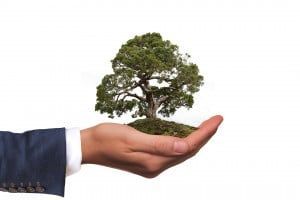The Dangers of Greenwashing Your Business

As consumers become increasingly aware of Earth’s environmental issues such as climate change and plastic pollution, businesses are beginning to take notice and step up. In response to increasing environmental awareness, many companies have
corporate and social responsibility policies
. These policies often outline the business’s efforts to minimize ecological damage and positively contribute to the broader community. Businesses can even tailor the causes they support based on their customers’ interests using customer information obtained from their
Consumer Data Platform
. But, if your company plans to make its eco-credentials a central corporate value, it must do it correctly; otherwise, this could be incredibly damaging to your business. Here is what you need to know about greenwashing your business and why it is a bad idea:
What is Greenwashing?
Greenwashing is something that you may have heard of but are unaware of what it means. Greenwashing is a concerning phenomenon and is widely viewed as a particularly cynical way of doing business. Just as whitewashing over an issue means covering it up and sweeping it aside using false information, greenwashing misleads consumers into thinking that a product or service is more environmentally friendly than it actually is. Greenwashing can take the form of exaggerated claims about a product or service’s eco-credentials, and in some cases, entirely unsubstantiated claims are made about the product or service.
Why do Companies use Greenwashing?
As the public’s awareness of environmental concerns continues to grow, consumers are increasingly seeking responsibly manufactured products. Many companies market their products as eco-friendly, as this portrays their brand in a positive light. Environmentally friendly companies are viewed as caring and ethical, which are significant selling points and help set a brand apart from its competitors. When a company markets its products in this way, it is doing so to meet the growing demand for green products and to capture the interest of a whole new group of customers that favor green products. So, greenwashing a brand and inflating its environmentally friendly credentials can help a business to boost its profile and increase sales.
The Negative Side of Greenwashing
Unethical
The main issue with greenwashing is that it is unethical and prevents consumers from making purchase decisions based on facts. Continuing to mass-produce products that are not truly environmentally friendly means that your business is probably contributing to the damage caused to the planet rather than helping to stop it, and even worse, is trying to cover this up.
Misleading
Loyal, satisfied customers are central to the success of every business. So, misleading your customers with false claims damages the relationship you have built up with them. No one likes to be deceived, and your customers are no exception.
Reputational Damage
Reputational damage can lead to financial losses as well as a loss of integrity. Both of these are bad news for your company. Greenwashing your business can cause significant damage to your reputation, so it is far better to be genuinely green from the start and enjoy the benefits of this.


